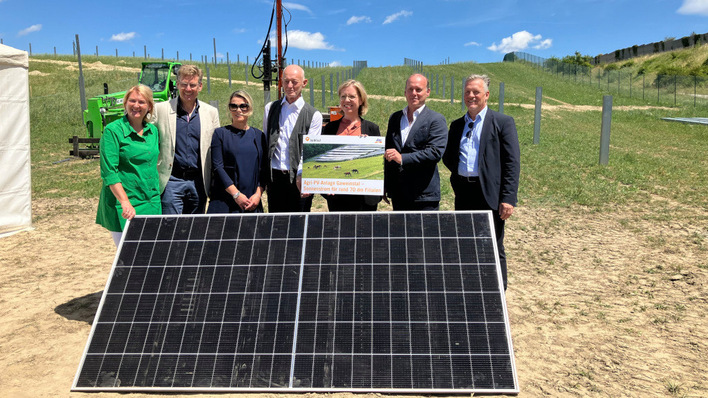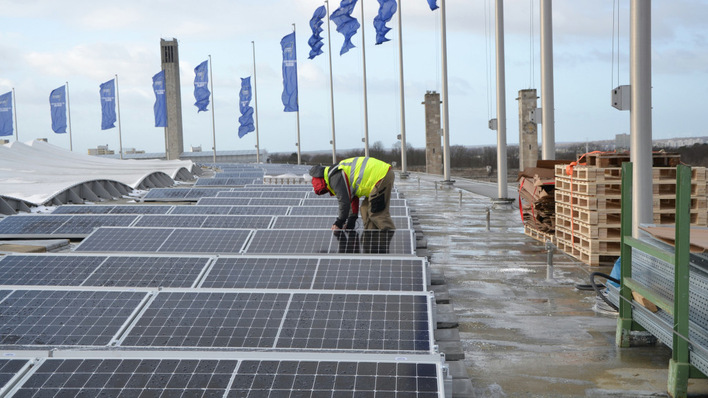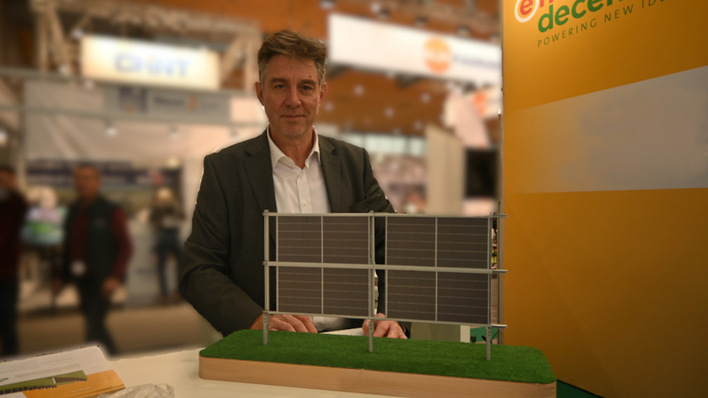Heavy rain, snow and wind are placing growing demands on the design of ground-mounted solar power plants. A key factor in avoiding weather-related damage is careful ground analysis. “The ground is usually the weakest link in the chain,” says Cedrik Zapfe, CTO of mounting system manufacturer Schletter. “Rammed piles in particular are exposed to enormous shearing forces and load changes under high wind load, and can loosen as a result – especially when the soil is saturated with water after heavy rainfall, for example.” A geological soil analysis, he emphasises, is essential when deciding on the type of foundation, the necessary pile-driving depth and the number of supports.
Dont miss! Webinar on 14th April 2025: Simple solutions for complex PV projects – with K2 Systems
The loosening of the soil due to the installation of the solar system should also be taken into account. “Nobody can stabilise the soil better than nature,” says Cedrik Zapfe. “Soil that has not been tilled is fully consolidated. The more the soil is tilled, the looser it is and the higher the risk of rainwater or wind damaging the system.”
Do not improvise
If the ground analysis shows that the soil is too soft for foundations using driven piles, an alternative is to use screw anchors set in concrete. However, this adds cost – and in many cases, concrete foundations are not permitted.
Stability is increased above all by a maximally professional installation. “Even the best planning and design won't help if mistakes are made during installation,” emphasises Zapfe. “Especially where you can't see it, improvisation is often used in practice. For example, driven foundations are simply shortened when they encounter obstacles in the ground. “For this reason, he advises close monitoring of the construction site. Responsive after-sales support on the side of the installation system manufacturer can also help minimise risks.
Slight subsidence
Regular maintenance can also reduce the risk of serious damage. For example, improper installation or mowing work often leads to minor mechanical damage to the galvanisation. Zapfe: “If these remain undetected, rust damage can occur that jeopardises long-term stability. The regular electrical inspection should therefore always include the substructure.”
Schletter Group extends logistics and production
This also serves to highlight any changes in the substructure. “Smaller subsidence of up to five centimetres does not pose a risk to the stability of the substructure. This is because most mounting systems have adjustment options, so this subsidence can be levelled out again,” says Zapfe.
Increasing stability
If it becomes clear that posts are beginning to sink or if this has already occurred, the system operator has to respond in a timely fashion, as pile-driving posts will require reinforcement. “In such cases, it would be possible to subsequently cast a concrete ring, a so-called elephant foot, around the mounting posts or to attach a steel plate, which also increases the bearing base,” says Cedrik Zapfe, describing the procedure. “The stability is then increased by the combination of skin friction of the driven post and base resistance due to the soil pressure of the elephant foot.”
Mounting posts loosened by higher wind forces can be tackled through the installation of an additional anchor, as well as by bracing the rears of module table rows with a steel cable.
IBC Solar: An all-rounder mounting system for pitched roofs
Rain is less of a factor in roof systems when it comes to the risks posed by increasing extreme weather situations. Provided that the system is built in accordance with applicable standards, there are sufficient drainage options for rainwater to make its way off the roof.
Find out in the next part of our series how extreme weather events are placing increasing demands on planners and operators of roof installations. In the first part of the series, read about the causes of sinking mounting posts. (su)








